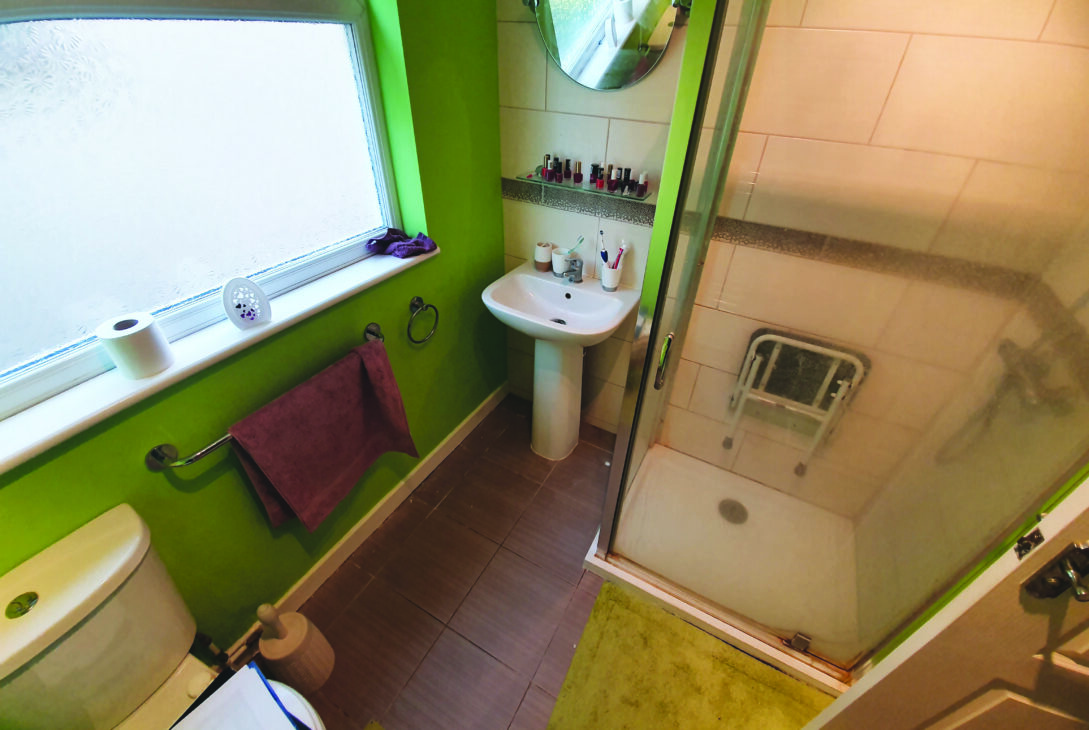
Creating an accessible space is often seen as a challenge, especially when it comes to bathrooms. Whether you are designing a new bathroom for yourself or someone else, the key to accessibility lies in finding the specific features that best represent your needs.
This guide will provide tips on how to approach choosing those must-have accessories so you can create a safe and inviting space that meets all accessibility requirements. From grab bar placements to raised toilet heights and other handy additions, this article will equip you with the tools needed to transform any restroom into an accommodating environment.
Understanding the importance of accessibility in bathrooms
Bathrooms are an essential part of our daily lives, and it is crucial that they are accessible to everyone. Not only do accessible bathrooms allow individuals with disabilities to use them comfortably, but they also make life easier for the elderly, pregnant women, and parents with young children.
In fact, accessible bathrooms can make a big difference in the quality of life for those who need them. The design of an accessible bathroom must facilitate independent use, and this includes considerations such as doorway width, grab bars, and toilet height.
It’s important to realise that making bathrooms more accessible is not only a legal requirement but also promotes inclusivity and shows that we value everyone’s right to access public spaces.
The impact of an accessible bathroom on individuals with disabilities
Having an accessible bathroom is vital for individuals with disabilities, providing them with the freedom and independence they require. The mere presence of a walk-in bath or shower can make an enormous difference in terms of safety and convenience for people with mobility issues, providing a level of comfort and self-sufficiency that is essential to their well-being.
For the elderly, in particular, a walk-in bath is an absolute must, enabling them to maintain their dignity and continue their daily routines without feeling like a burden to others. By designing bathrooms that cater to the needs of people with disabilities, we can make a substantial impact on their quality of life.
Assessing Needs and Requirements
Evaluating specific accessibility needs for the bathroom
The bathroom is a highly functional space in every household. It is a place where we go to take care of our personal hygiene needs and recharge after a long day. However, we often overlook the importance of evaluating specific accessibility needs for the bathroom.
For individuals with mobility or sensory issues, the bathroom can pose several challenges. Therefore, it is crucial to design and equip the bathroom with features that cater to their needs.
This can include installing grab bars near the toilet and shower, using non-slip flooring, and creating enough space for manoeuvrability. By addressing these needs, we can ensure that everyone’s bathroom experience is safe and comfortable.
Consulting with professionals for personalised recommendations
When it comes to designing a bathroom that is tailored to the needs of those with disabilities, seeking the advice and expertise of a professional can make all the difference. With their knowledge of accessibility guidelines and experience in adapting bathrooms to suit various requirements, a consultant can offer personalised recommendations that take into account specific needs and limitations.
This can lead to a safer and more comfortable bathroom environment, minimising the risk of falls and increasing overall accessibility. From grab bars to walk-in tubs and roll-in showers, a professional consultant can help you navigate the vast range of options and select the most suitable solutions for your space and budget, ensuring a bathroom that meets your unique needs and provides peace of mind.
Layout and Space Planning
Determining the Ideal Bathroom Size
Designing an accessible bathroom can be a challenging task. One of the most important aspects to consider is the size of the space. Determining the ideal bathroom size will help ensure that it is functional and comfortable for people who have mobility impairments or use a wheelchair.
There are a few factors that need to be taken into account when determining the size of the bathroom, such as the user’s mobility needs, the fixtures and equipment that need to be installed, and building regulations.
A well-designed accessible bathroom will provide users with maximum independence and comfort, making it a crucial element in improving their quality of life. By taking the time to carefully plan and design an accessible bathroom, you can help create a space that is practical, comfortable, and visually appealing.
Considerations for determining the optimal size for an accessible bathroom
When it comes to designing accessible bathrooms, determining the optimal size is crucial. A spacious layout is necessary to accommodate mobility aids such as wheelchairs, walkers, and canes. In addition, it allows caregivers to assist individuals with disabilities when necessary. However, size isn’t the only consideration.
Other factors, such as the placement of grab bars and the type of toilet, must also be taken into account to ensure maximum safety and comfort for individuals with disabilities. Ultimately, finding the perfect balance between space and functionality is key to creating a truly accessible bathroom.
Space requirements for manoeuvrability and accessibility features
When it comes to designing a space, manoeuvrability and accessibility features are both incredibly important. Nobody wants to feel cramped or restricted in their home or workplace, and spaces must be designed in such a way that people with disabilities or mobility issues can access them easily.
This is particularly relevant when it comes to public spaces, where people of all abilities need to be able to navigate easily and safely. Considering space requirements for manoeuvrability and accessibility features is therefore an essential part of any design project, whether you are working on a small residential home or a large commercial building.
With thoughtful planning and careful attention to detail, it is possible to create spaces that are both beautiful and functional, meeting the needs of all users regardless of their abilities.
Traffic Flow and Clearance

Designing the layout to ensure smooth navigation within the bathroom
Designing the layout of an accessible bathroom is crucial for ensuring the smooth navigation of people with varied physical abilities. Proper planning of the bathroom can significantly enhance the independence and dignity of the users while also creating a safe and functional space. The layout should consider the personal needs of the users, the dimensions of the space, and the placement of essential elements such as grab bars, sinks, toilets, and showers.
To promote ease of movement and enhance visibility, it is recommended to use contrasting colours for walls and flooring, install appropriate lighting, and avoid clutter. A well-designed layout makes it possible for everyone, regardless of their mobility level, to use the bathroom safely, comfortably, and confidently.
Ensuring adequate clearance for wheelchair users
When it comes to design and construction, accessibility is key. This is particularly important in areas like bathrooms, where wheelchair users need to have enough space to move around with comfort and ease. Ensuring adequate clearance for wheelchair users in accessible bathrooms is crucial to enable them to use the facilities independently and with dignity.
From the position of grab bars to the placement of sinks and toilets, every detail needs to be carefully considered to ensure maximum accessibility. By prioritizing accessibility in bathroom design, we can create spaces that are inclusive and welcoming for all.
Selecting slip-resistant flooring materials to prevent accidents
When it comes to designing a bathroom for individuals with disabilities, slip-resistant flooring is a crucial factor to consider. The last thing anyone wants is for someone to slip and fall in the bathroom, which can cause serious injuries and setbacks in recovery.
But with the wide variety of flooring materials available today, it can be overwhelming to select the best one. Fortunately, slip-resistant flooring is designed to provide traction and reduce the risk of falls, regardless of whether the surface is wet or dry.
By carefully considering the different options, you can choose a material that meets the needs of your disabled bathroom, provides a safe environment, and looks great at the same time.
Choosing materials that are easy to clean and maintain
When it comes to designing a bathroom for disabled individuals, choosing the right materials is crucial. One key factor to consider is how easy the materials are to clean and maintain. This is important not only for hygiene purposes but also helps with the longevity of the bathroom. Opting for materials like ceramic or porcelain tiles, stainless steel fixtures or quartz countertops can make cleaning a breeze.
Additionally, choosing non-slip and durable materials can ensure that the bathroom remains safe and user-friendly for those with disabilities. By carefully selecting materials that are easy to clean and maintain, you can create a bathroom that is not only functional but also aesthetically pleasing.
Accessible Showers and Bathtubs
Roll-In Showers
Roll-in showers are a lifesaver for people with mobility issues or disabilities. They provide easy access that eliminates the need to step over any barriers. Not only do roll-in showers increase safety and accessibility, but they can also add style and beauty to your bathroom. With sleek designs and easy-to-clean surfaces, these showers can give your bathroom a modern and sophisticated look.
Imagine being able to walk into your shower without worrying about tripping or falling, and instead being able to focus on the relaxing spa-like experience of the water. Roll-in showers are a truly remarkable solution for anyone looking to make their bathroom a safer and more luxurious space.
Essential features and considerations for roll-in showers
When it comes to designing a bathroom for someone with a disability, one important feature to consider is a roll-in shower. These types of showers provide a safe and accessible bathing option for individuals who use wheelchairs or other mobility aids.
When designing a roll-in shower, it’s important to ensure that the bathroom is large enough to accommodate the shower and that the shower floor is level with the rest of the bathroom floor, providing easy access.
In addition, sturdy grab bars should be installed throughout the shower area for added safety. Taking the time to properly design and install a roll-in shower can make a huge difference in a disabled person’s ability to maintain their independence and take care of their personal hygiene needs.
Walk-In Bathtubs
Exploring the benefits of walk-in bathtubs
There are many benefits to having a walk-in bathtub installed in the home. This type of tub offers an array of features designed to help those with limited mobility better manage their bathing needs.
For seniors or disabled individuals who may not be able to move around as easily, this can be a great way to maintain independence and take care of personal hygiene without assistance from others. Walk-in tubs are designed to be safer than traditional bathtubs, with features like easy-to-reach grab bars and a low or non-existent step. There are also options for built-in seating and adjustable water jets for a more comfortable bathing experience.
Key features to look for when choosing a walk-in bathtub
When considering a walk-in bathtub, it’s important to look for key features that will make your bathing experience safe and enjoyable. One of the most important features to consider is the door, which should be easy to open and close and have a secure locking mechanism.
You may also want to think about the shape and size of the tub, and whether it has any additional features such as seating or non-slip surfaces for added safety. Another important consideration is the material the tub is made of, as it should be durable and easy to clean.
Lastly, make sure to check the installation requirements and if it’s compatible with your home’s plumbing. With these key features in mind, you can choose a walk-in bathtub that is perfect for your needs.
Toilet Accessibility
Making sure that bathrooms are accessible to everyone is an important aspect of creating an inclusive and accommodating environment. When it comes to disabled bathrooms, toilet accessibility is a crucial consideration.
Providing a toilet that is specifically designed with the needs of disabled individuals in mind can make a significant difference in their ability to use the restroom comfortably and safely.
Simple adjustments such as installing grab bars or ensuring that the toilet is at the appropriate height can greatly improve accessibility for those with mobility impairments. By taking the time to ensure that disabled toilets are properly equipped, we can help to promote greater independence and dignity for all individuals.
Conclusion
Ultimately, we have seen the importance of accessibility in making bathrooms comfortable and safe for everyone. Every step of planning towards an accessible bathroom should be taken carefully to meet the specific needs and preferences of any individual with a disability.









